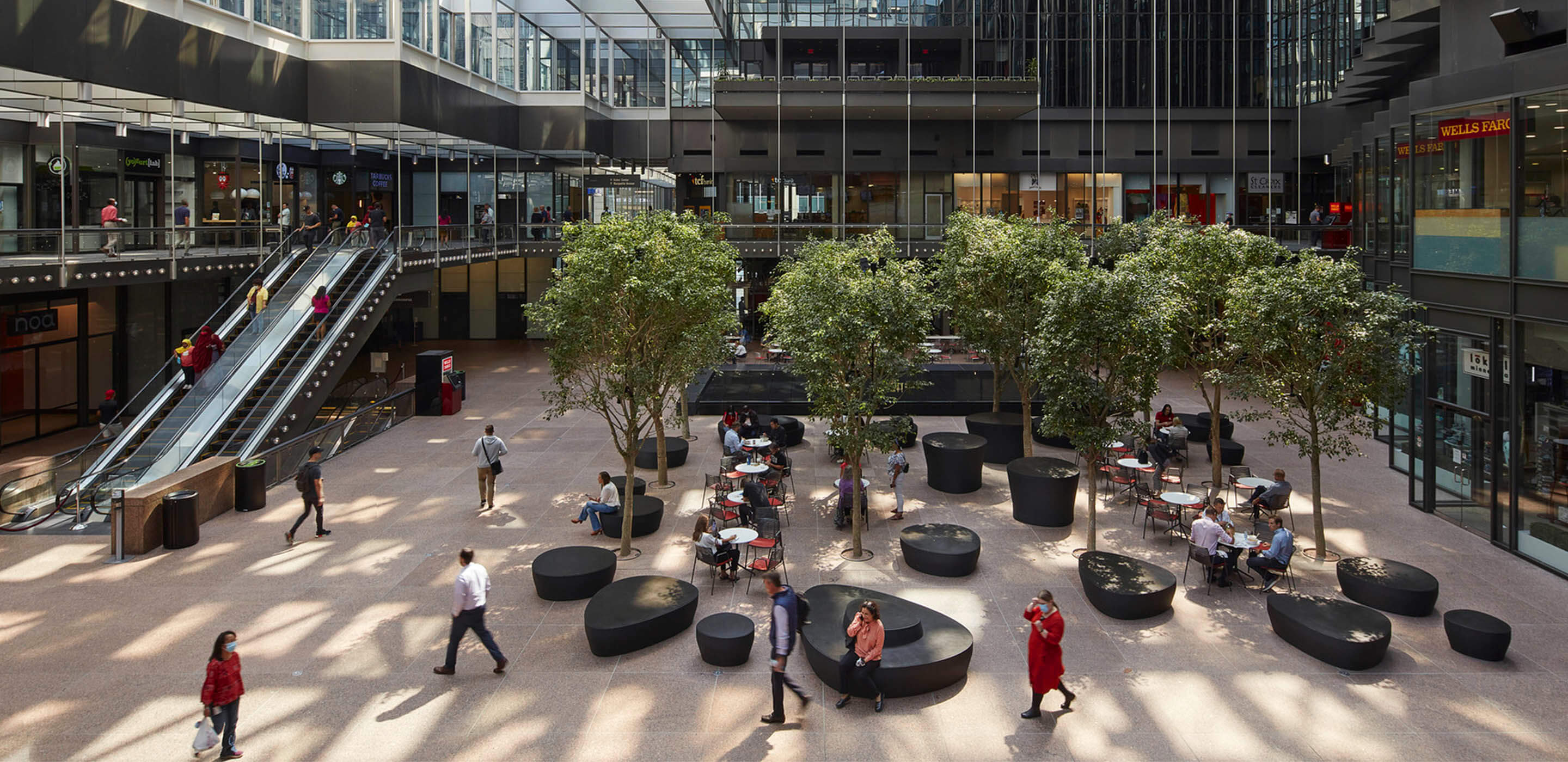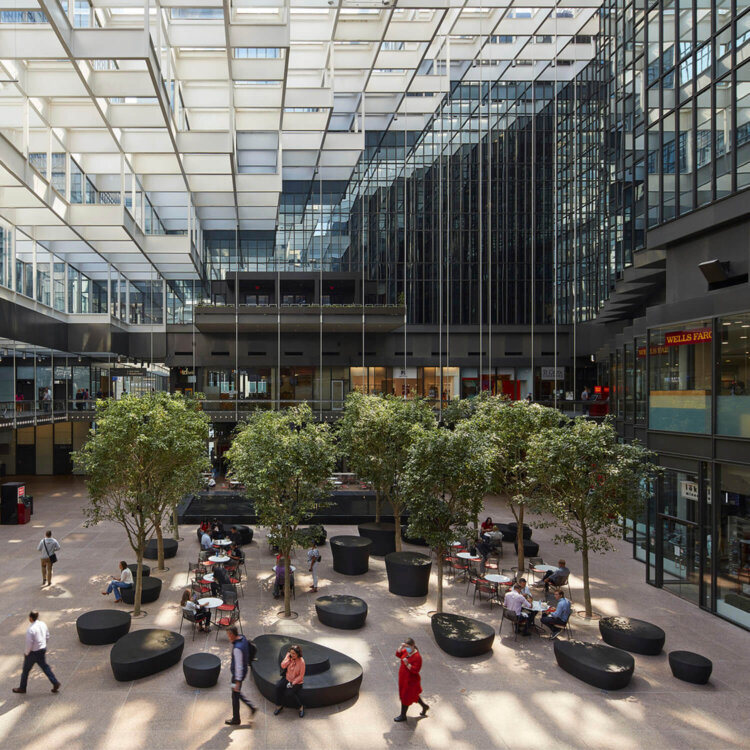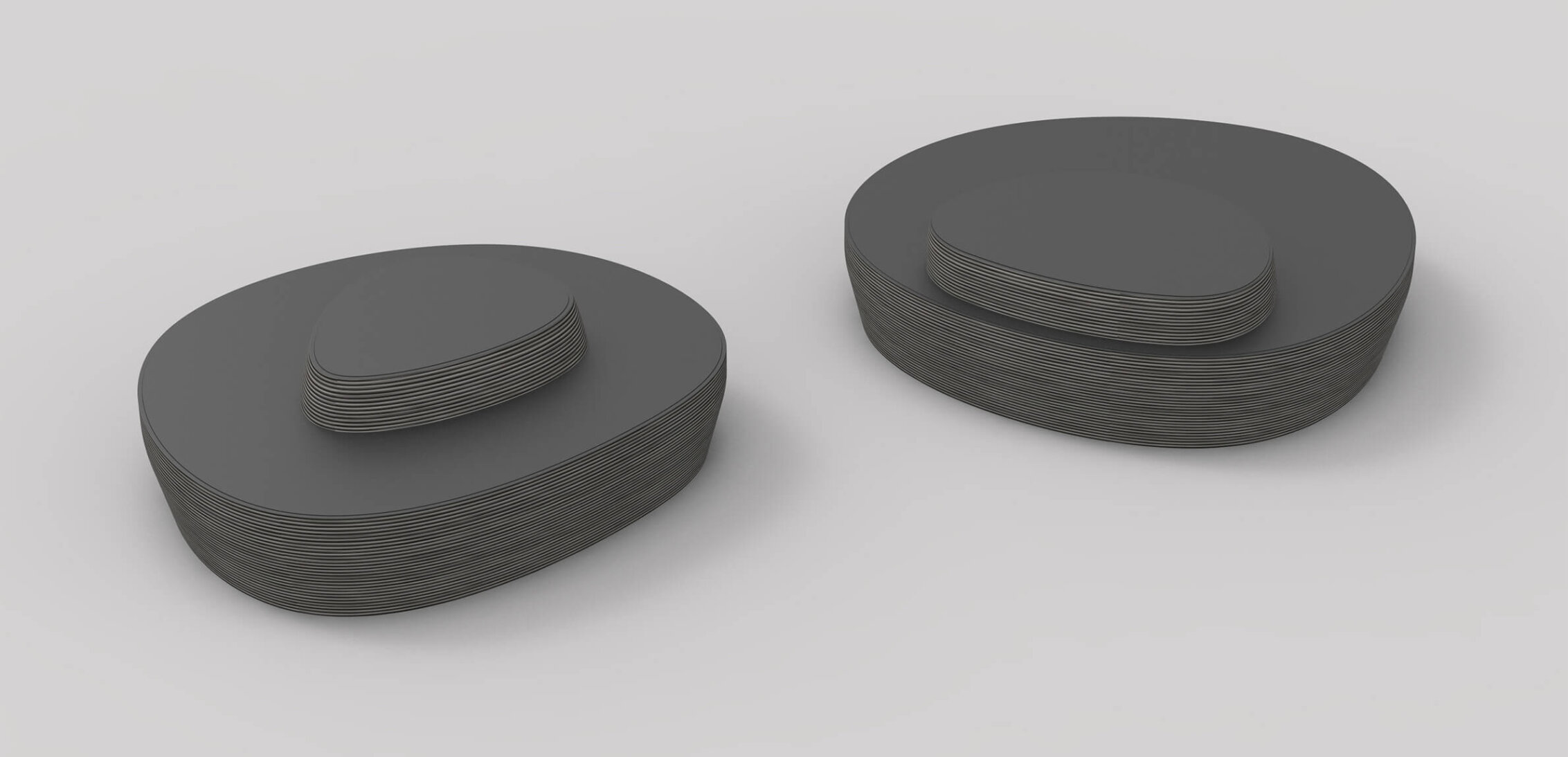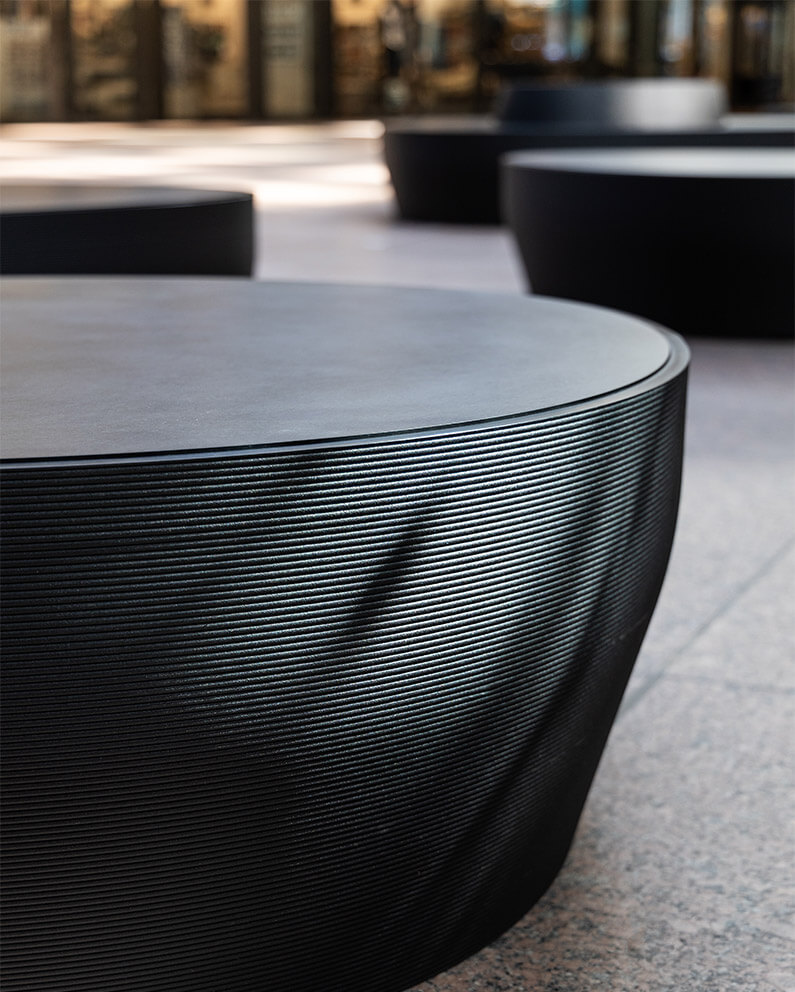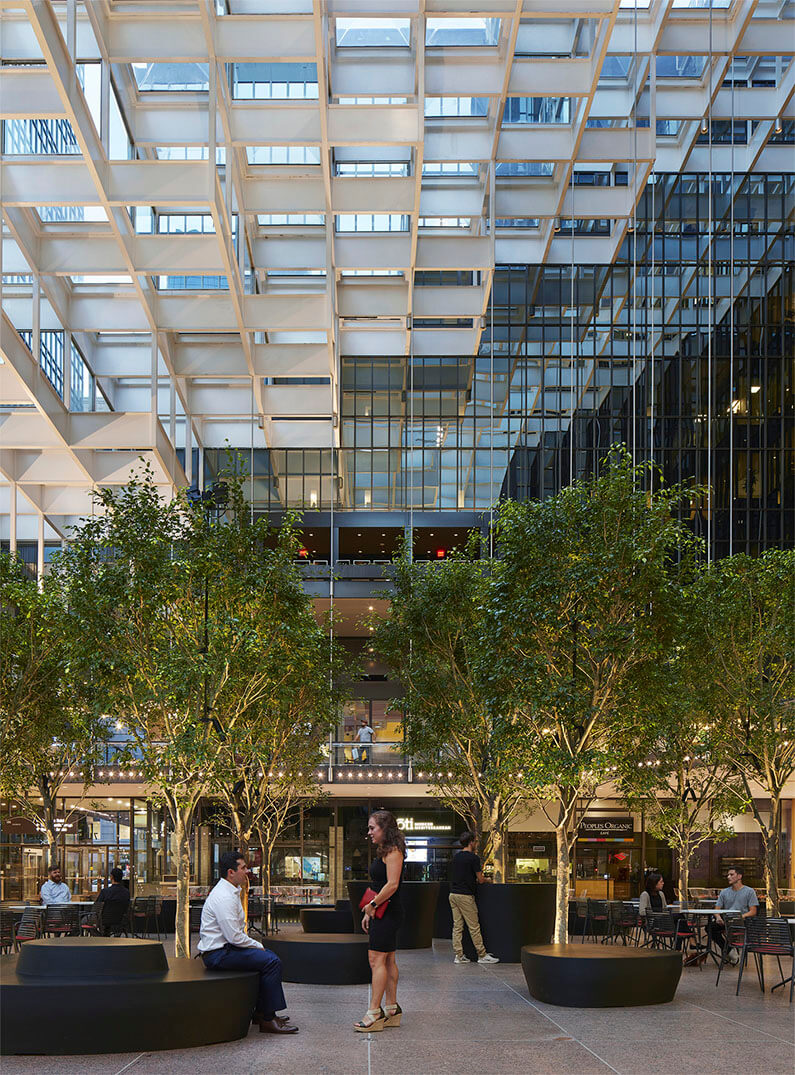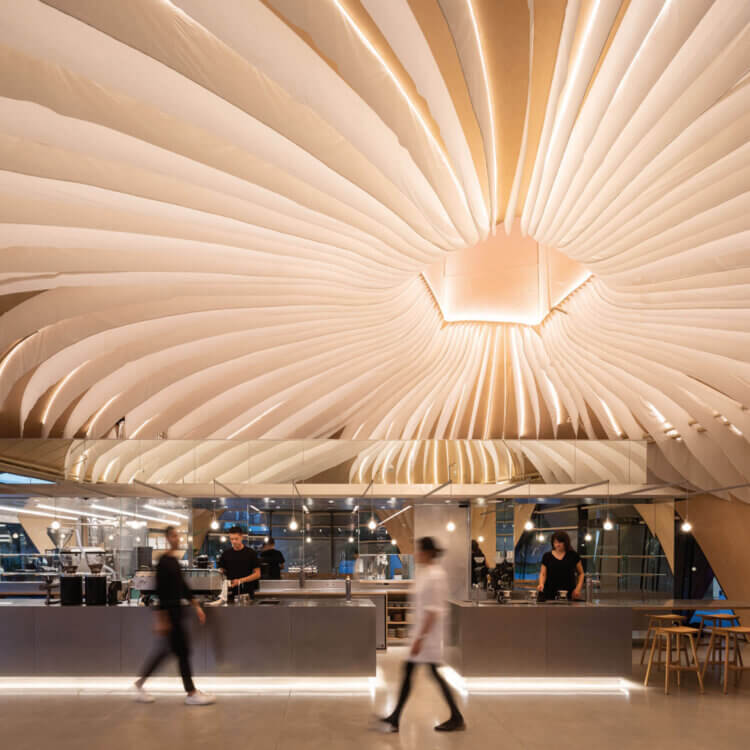In 2021, shortly before the IDS Center turned 50, the Crystal Court underwent a renovation to modernize the space and enhance its reputation as a vibrant place to meet, mingle, and interact. “We wanted to respect the original intent of the design, which created an indoor park atmosphere,” said Deb Kolar, General Manager of the IDS Center for Accesso and a key member of the team that orchestrated the renovation. “Our aim was to keep familiar elements that visitors to the Crystal Court have enjoyed for years. That’s why water, real trees, and seating remained the pillars of the project.”
As part of the renovation, designers removed the uniformly stark white park benches that were relics from a ‘90s-era renovation. Kolar wanted to replace them with durable and comfortable furniture that was unique to the plaza. The new benches did not all have to look exactly alike, but they needed to be visually cohesive.
